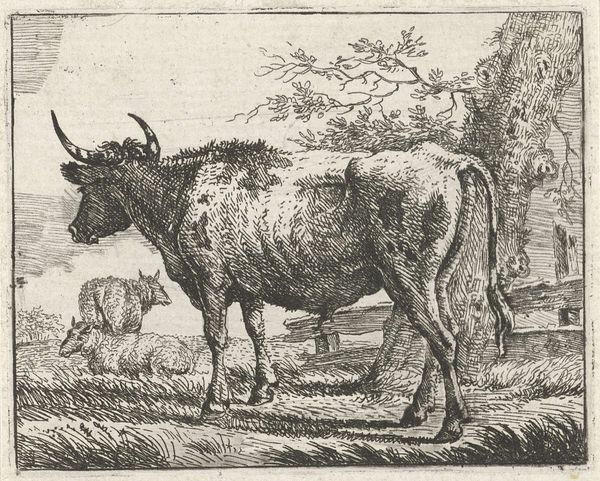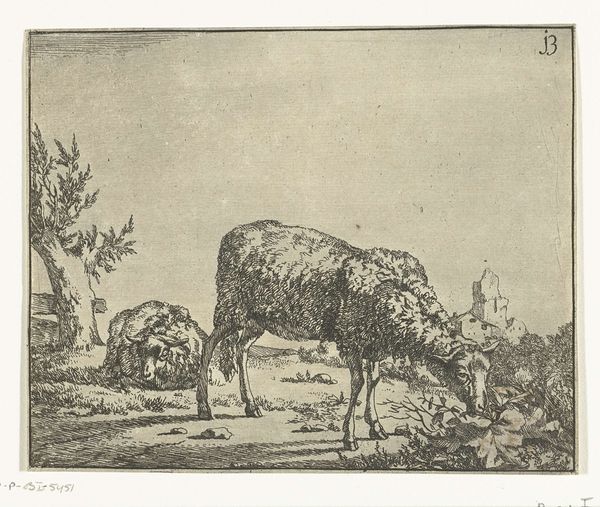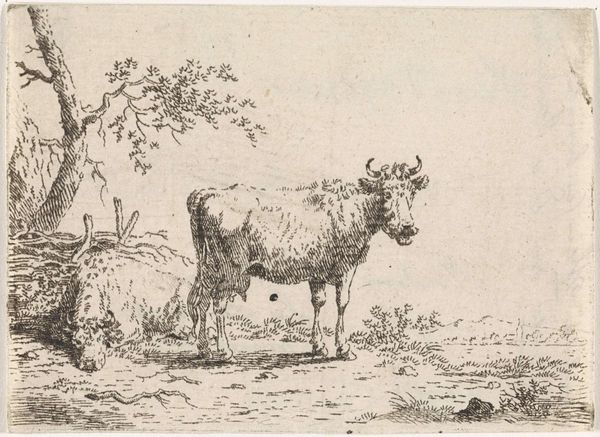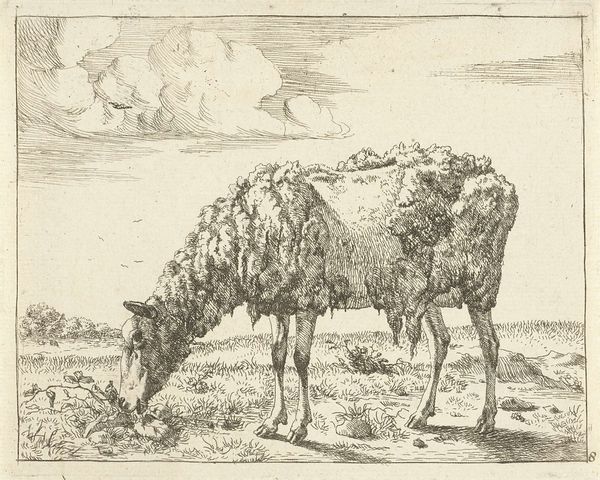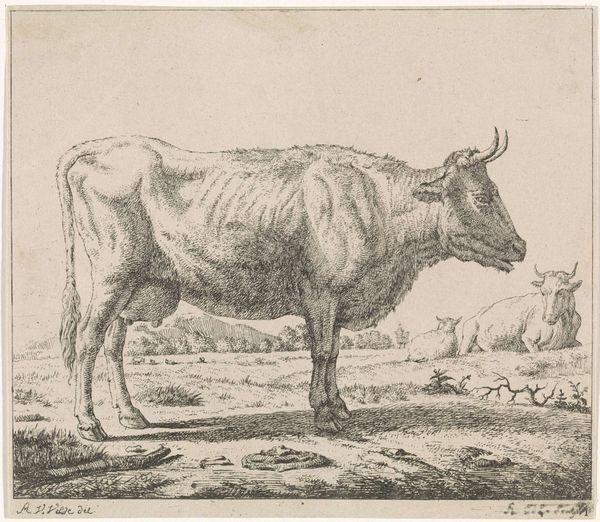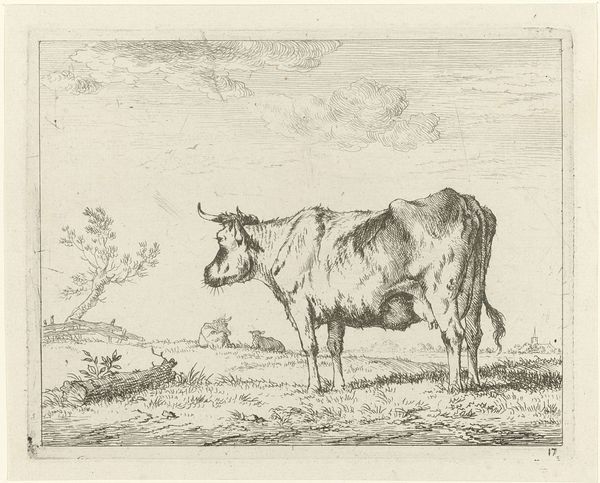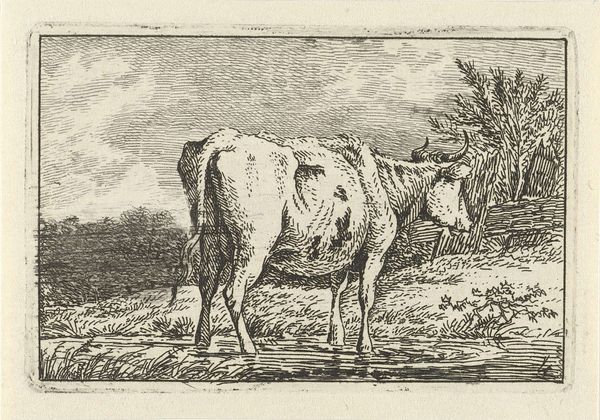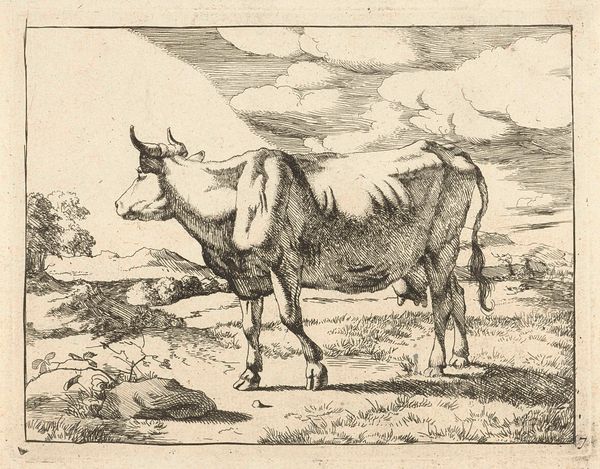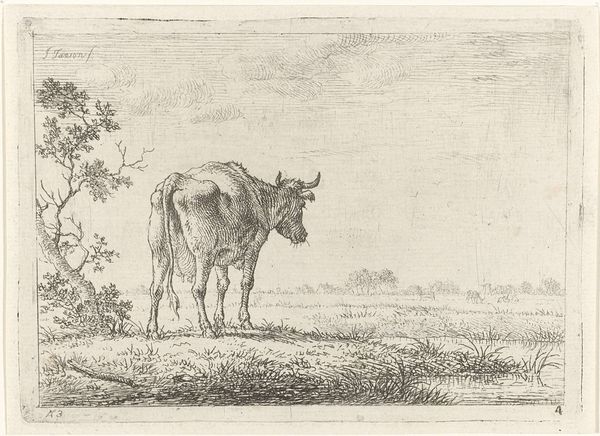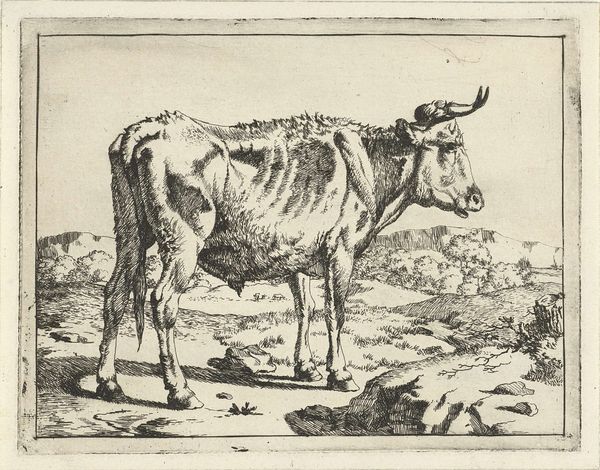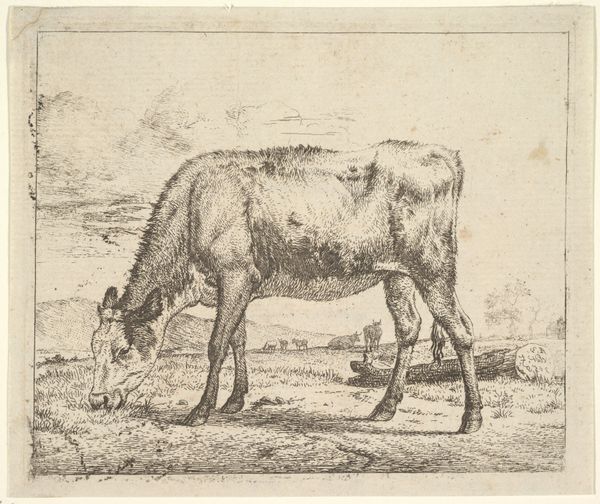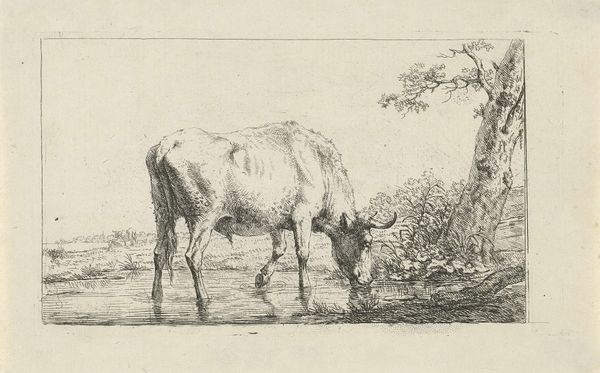
print, etching
#
baroque
#
animal
# print
#
etching
#
landscape
#
realism
Dimensions: height 111 mm, width 139 mm
Copyright: Rijks Museum: Open Domain
Marcus de Bye etched this "Standing Sheep, from Behind, by Fence" in the 17th century. The sheep, a seemingly simple subject, is laden with historical symbolism. In Christian iconography, the sheep represents innocence, purity, and the faithful flock. It is a symbol of Christ himself, the Lamb of God. Yet, consider the "Ecce Agnus Dei" depictions—the lamb is often sacrificial, bearing a wound, symbolizing profound suffering. De Bye’s sheep stands peacefully, its back turned, perhaps unaware, or indifferent, to its symbolic weight. We see echoes of this motif across centuries; from ancient pastoral scenes evoking an idyllic existence to its darker manifestations in religious art. The enduring image of the sheep touches on collective anxieties and hopes, reminding us of humanity’s longing for guidance and protection, while also hinting at vulnerability and inevitable sacrifice. It is a potent, recurring symbol, its simplicity belying a depth of cultural resonance.
Comments
No comments
Be the first to comment and join the conversation on the ultimate creative platform.
